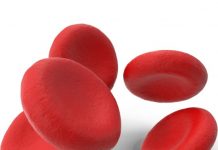 Aplastic Anemia is a disorder of the blood caused by damaged stem cells in the bone marrow.
Aplastic Anemia is a disorder of the blood caused by damaged stem cells in the bone marrow.
The bone marrow is unable to make enough new blood cells for the body to function properly.
The bone marrow, spongy tissue inside the bones, makes stem cells which then develop into red and white blood cells and platelets.
The reduced number of red blood cells causes the level of hemoglobin to drop. Hemoglobin is the part of the red blood cell that carries the oxygen in the blood, so less oxygen is getting around to the organs and muscles. White blood cells help the body fight infections.
Fewer platelets in the blood can cause clotting problems which might cause nose and gum bleeds.
There are several causes of aplastic anemia, but in about half the cases, no reason is ever found. Toxins, like those found in pesticides, have been linked to aplastic anemia, as has chemotherapy, certain medicines, hepatitis, lupus and rheumatoid arthritis.
It is often the feeling of continual tiredness that takes a person to the doctor, but other symptoms could be lack of color in the lips, skin and hands, headaches, shortness of breath, fever or infection, nose bleeds or bleeding gums.
The doctor would do a routine thorough examination and you would need to go for a blood test, which will confirm a drop in red and white blood cells and platelets in your blood. Your doctor might refer you to a specialist in blood disorders, a hematologist.
A bone marrow test may be done to confirm the diagnosis of aplastic anemia. Consideration is given to the age and health of the patient and the extent of their particular case of aplastic anemia before deciding on a suitable treatment.
If your condition is mild to moderate, you may not need treatment at the time, although your condition will be monitored with regular follow-up blood tests. Severe cases need to be treated to prevent complications occurring.
The only cure for aplastic anemia at the present time is a bone marrow transplant. This procedure replaces the bone marrow with healthy bone marrow donated by another person, but it is not always a viable option for every person suffering from the disease.
There are, however successful treatments available to prevent the condition getting any worse or even reverse the effects of aplastic anemia. These include blood transfusions, antibiotics, and drug therapy to suppress your immune system and stimulate your bone marrow to start making new blood cells again.
With prompt attention and the proper care, most people with aplastic anemia are successfully treated and some can be cured. You will be able to go back to your usual activities after the treatment has taken effect.
You should avoid contact with people who have an infection, be scrupulous about your personal hygiene, avoid uncooked food and have an annual flu shot. There is the possibility you will need further treatments and you will need to be monitored by your doctor.
Eat a healthy, balanced diet, get some moderate exercise on doctor’s advice and practise some form of relaxation. There is no reason why you shouldn’t be able to lead a happy and productive life with aplastic anemia.













